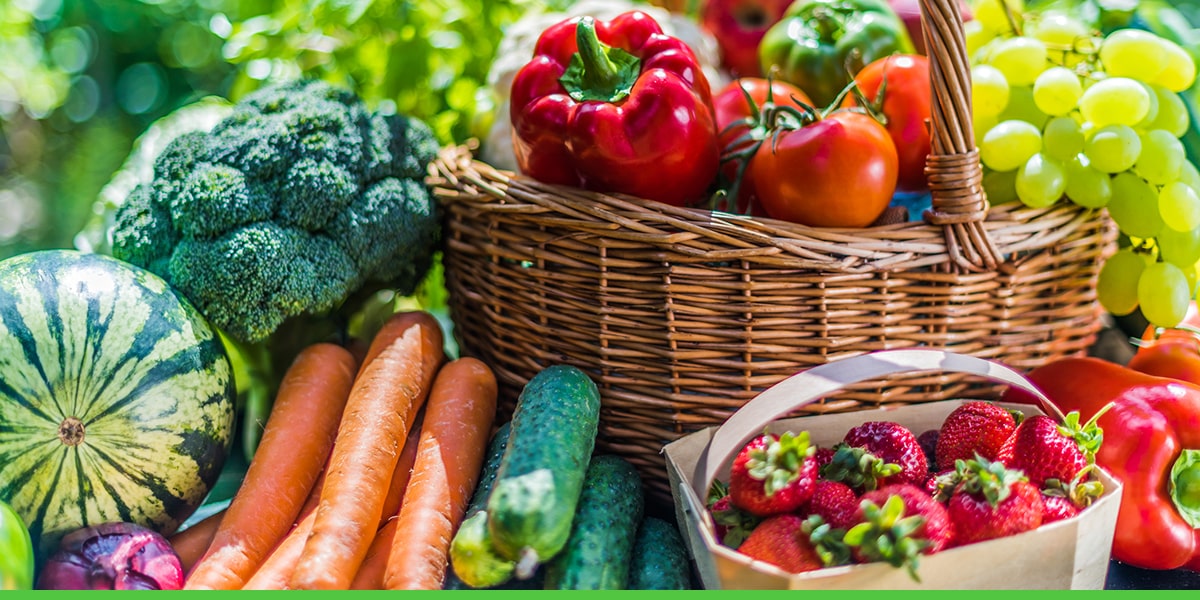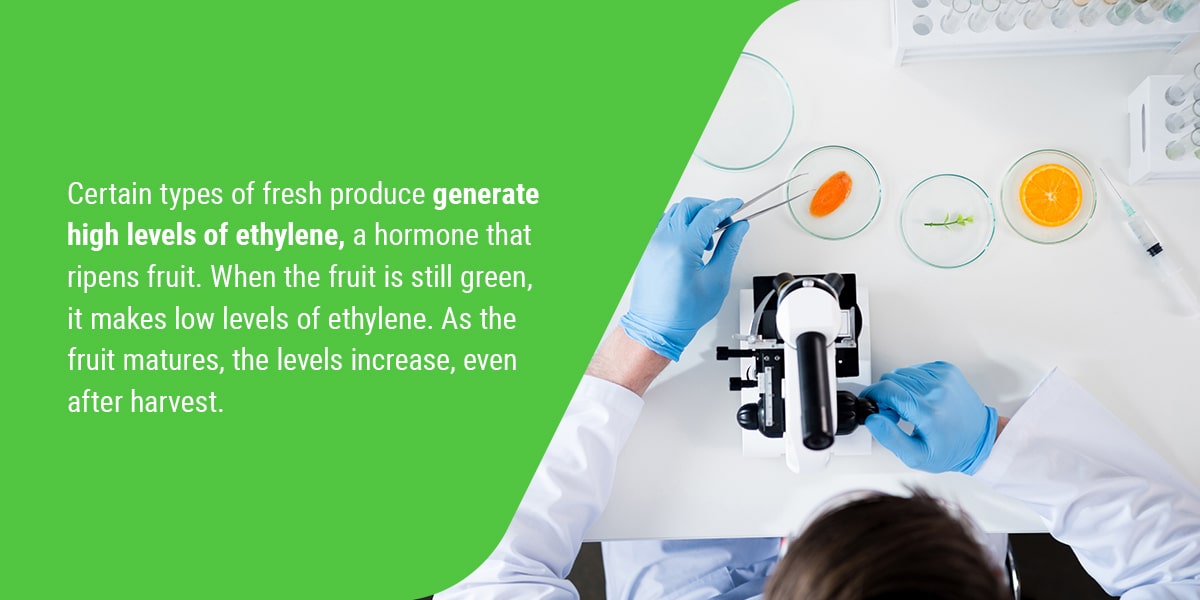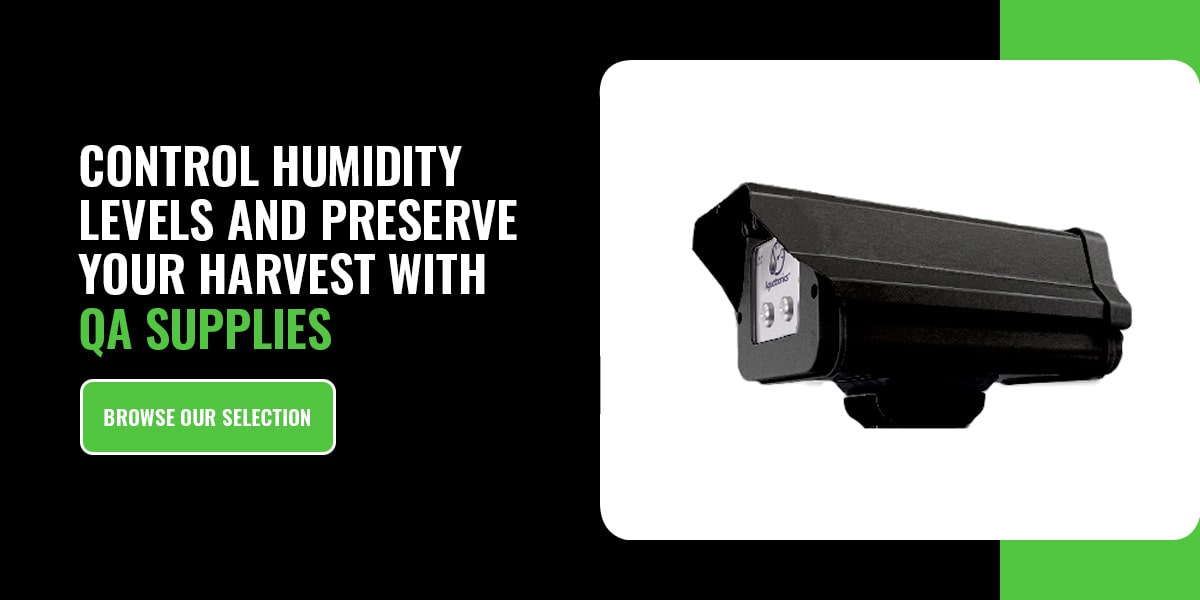Ideal Humidity for Fruits and Vegetables
Apr 26th 2023

- How Does Humidity Affect Fresh Produce?
- What Humidity Is Best for Storing Fruits and Vegetables?
- Grouping Fruits and Vegetables by Water Composition
- Control Humidity Levels and Preserve Your Harvest With QA Supplies
Fruit and vegetables continue to grow and mature even after they've been harvested. Its composition of living tissues continues to be affected by its surrounding environment, which includes its water intake and loss. Fresh produce industries understand the importance of controlling temperatures and humanity from the farm to retail to preserve the produce.
Each type of produce has different requirements for its relative humanity or RH. Storage facilities and transport need instruments to give quality managers control over the surrounding environment. Postharvest management experts are trained in what humidity is best for storing vegetables and fruit.
How Does Humidity Affect Fresh Produce?
The real question you need to ask is whether you need high or low humidity for fruits and which is better for vegetables. Leafy vegetables are very different in composition from denser ones, like potatoes. Each grouping requires a different level of humidity.
Keeping humidity at high levels will increase moisture levels in the air and reduce water loss. Implement low temperatures to prevent bacteria from spreading in high-moisture air environments.
You will see a visual difference in the fruit and vegetables if these conditions are not controlled, such as:
- Shrinking and shriveling of the skin.
- Premature softening or rot.
- Wilting leaves and greenery.
The most significant indicator that the humidity and temperature levels are too high is mold growth. Fruit is the most susceptible to this. You will find mold grows quickly on softer items such as strawberries and peaches. Bananas will turn brown.
Temperature and humidity need to work together for optimal results. To ensure quality, tools like the Baxlo Fruit Firmness Tester can help monitor the firmness of fruits, which is essential for determining ripeness and storage conditions. Humidity for fruits and vegetables needs to be within the ideal temperature and humidity ranges when stored. Consider installing independent air thermometers as an alternative way to check levels.
What Humidity Is Best for Storing Fruits and Vegetables?
You might think that storing these items together could save costs, but each type of vegetable and fruit has different requirements. For example, turnips need lower temperatures than southern peas and apples, but not quite as low as pears require.
Vegetable and Fruit General Humidity Levels
There are basic principles for humanity levels. Below is a breakdown of average temperatures and humidity levels required for certain groups of vegetables and fruits:
- Leafy vegetables: Spinach, swiss chard, lettuce and cabbage tend to show the earliest signs of any temperature or humidity issues by wilting. In general, leafy greens do best with high humanity and the coolest temperatures because of their high water content compared to other produce.
- Citrus fruits: Oranges, lemons and grapefruit generally have a good shelf life. The thick skin helps protect the fruit, but they can suffer from excess water and prefer less moisture in the air.
- Apples, grapes and bell peppers: Fruits with thin skin prefer less humidity. They are sensitive to any major changes and typically prefer dry, colder air with minimal moisture.
- Tomatoes: Tomatoes also have thin skin and prefer low humidity levels, but they are also sensitive to the cold and often lose flavor and soften if the conditions are not optimal for them.

How Does Ethylene Affect Humidity?
Certain types of fresh produce generate high levels of ethylene, a hormone that ripens fruit. When the fruit is still green, it makes low levels of ethylene. As the fruit matures, the levels increase, even after harvest. Temperature and humidity slow the process of ripening fruit, giving it more shelf life. If you have fruit with high levels of ethylene, the two cancel each other out, and the fruit ripens within a few days.
A number of fruits produce high levels of ethylene, including bananas, melons and apples. Other fruits are highly sensitive to ethylene and react quickly to it, despite having low levels, such as pears and mangos.
Other Factors to Consider When Storing Fruits and Vegetables
Flavors can also contaminate each other, particularly strong-tasting vegetables like onions or fruits such as bananas. If stored with sensitive flavored items, such as apples or potatoes, they could quickly cross-contaminate.
According to the Institute of Agriculture of the University of Tennesse, there are four main groupings for fruits and vegetables:
- Group one: Certain fruits and vegetables in this group produce high levels of ethylene that need to be separated from group two. They prefer temperatures between 32 and 36 degrees Fahrenheit with relative humidity of 90 to 95%.
- Group two: Group two produce also prefers temperatures between 32 and 36 degrees Fahrenheit with relative humidity of 90% to 95%.
- Group three: Items that prefer less water moisture, such as garlic and onions, are in this group. Items in this group, like garlic and onions, prefer less moisture and need temperatures between 32 and 36 degrees Fahrenheit with relative humidity of 65% and 75%.
- Group four: Fruit and vegetables that prefer warmer temperatures include cucumbers and watermelon. They thrive in temperatures up to 50 degrees Fahrenheit with a relative humidity of 90% to 95%.
Grouping Fruits and Vegetables by Water Composition
One of the factors for the different humidity levels for fruits and vegetables is the composition of water within the produce. These levels also vary between items, but examples of fruits and vegetables with high water compositions include:
- Watermelon
- Peaches
- Blackberries
- Strawberries
- Cantaloupe
- Lettuce
- Celery
- Cucumber
- Green bell peppers
- Portabella mushrooms
Storage life varies between fruit and vegetables, along with humidity and temperature control. In some cases, you might be able to extend your produces life span under expert guidance.
Reducing Excess Free Water When Storing Produce
High humidity levels cause condensation issues, leading to excess free water. If the water remains too close to the produce or within its packaging, it can cause cross-contamination with other crops and stimulate microbial activity. Fruits and vegetables either quickly grow mold, bacteria or rot.
Excess water needs to be caught early in the process and removed. The longer the fresh produce is exposed to extra water, the shorter the shelf life. Engaging with an expert in humidifying technology can ensure that humidity levels remain high while the air remains dry.
Dehumidifiers are often used at certain stages of the fresh produce chain for drying purposes. They are also used for frozen produce to ensure no excessive moisture could freeze as ice on the crop or for drying fruits out.
Control Humidity Levels and Preserve Your Harvest With QA Supplies
Humidifiers come in different shapes, sizes and options depending on what your storage or transport facilities require. Some humidifiers are installed at low levels, while others, such as Aguair’s Aguatronics system , work by creating a fine, dry fog. This creates high humidity without wet condensation that could contaminate crops and produce.
Having the right equipment is essential when measuring and maintaining the right humidity levels for your crops and growing environment. Chat with an expert at QA Supplies today to learn how we can help!


